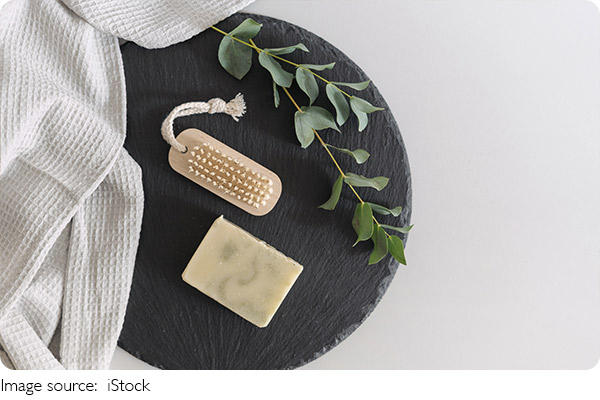Crafting Artisan Soap

Handmade soap making is a creative and skillful craft that relies on precise methods and thoughtful recipe selection.
The method chosen for making soap and the selection of ingredients are crucial factors in determining the quality and characteristics of the final product.
One of the easiest methods for making handmade soap is the base oil mixing method, which is particularly suitable for beginners. This method involves dissolving fats and oils sequentially over heat, followed by mixing and stirring them with the lye solution.
It is beginner-friendly and allows novices to start with simple recipes, gradually gaining experience. Before pouring the soap mixture into molds, it's important to create a figure-eight pattern on the surface for optimal results.
Cosmetic products are more than just makeup; they are a form of self-expression, enhancing beauty and confidence.
Want beautiful nails? Be aware of nail polish risks and how to stay safe!
Explore the rich heritage of Indian jewelry, from its ancient origins to its enduring significance in Indian culture.
Exploring the Allure of Blind Boxes and Figures: Unraveling the Consumer Addiction.
Luxury bag care: Craft, Charm, Endurance.
Explore five perfumes that capture natural vitality, bringing fresh, uplifting scents that radiate energy and life!
For those seeking a more advanced technique, the water splitting method offers a complex yet effective approach to soap making. This method involves lowering the concentration of sodium hydroxide and raising the soap temperature by adding water twice during the process to accelerate saponification.
The steps include alkali melting, initial oil-alkali mixing, two additions of water, and thorough stirring. Notably, the water splitting method is not suitable for recipes prone to acceleration (often denoted as "T"). It is best suited for recipes requiring longer stirring times.
The oil splitting method represents a high-level approach to handmade soap production. This method utilizes a low proportion of oil combined with a high proportion of sodium hydroxide, gradually adding different fats and oils to ensure complete saponification, thereby reducing rancidity and minimizing mixing time.
The steps involve priming oil, incorporating the main body oil, adding additional oils, and superfatting. While the oil splitting method demands some experience, it yields handmade soaps that are gentler on the skin and have an extended shelf life.
Handmade soap bases typically consist of a blend of oils and fats, liquid lye (sodium hydroxide), and water. The oils and fats are combined with the lye to form a soap solution during the soap making process. The composition and ratio of these ingredients determine the texture, fragrance, and effectiveness of the handmade soap.
Various types of oils and fats can be utilized in handmade soap production, including edible oils and animal fats.

Commonly used cooking oils, such as olive oil, palm oil, coconut oil, grapeseed oil, jojoba oil, and safflower seed oil, offer diverse properties that can influence the soap's texture, lather, and moisturizing abilities.
Animal fats like tallow and lard are also viable options for handmade soap, as they possess a high sodium hydroxide binding value and contribute to the soap's hardness and texture.
However, it's important to note that animal fats are prone to rancidity and may impart an odor, making them unsuitable for vegetarians. Careful consideration should be taken when incorporating animal fats into soap recipes.
Botanical additives such as rosemary, lavender, and peppermint can be infused into homemade soaps for their antibacterial, anti-inflammatory, and soothing properties.
It's essential to use these herbs in moderation, typically around 1-5% of the total weight of the soap, to prevent compromising the stability and quality of the final product.
Soap Making Tutorial and Recipe for Absolute Beginners (you can do it!)
Video by Elly's Everyday Soap Making

 · Fashion Team
· Fashion Team